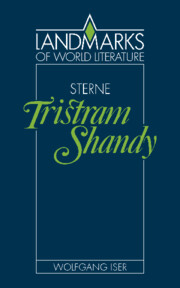I - Subjectivity revealed through textual fields of reference
Published online by Cambridge University Press: 06 January 2010
Summary
Does Tristram Shandy have a beginning?
The question itself implies that the time-honoured concept of a story as having a beginning, a middle and an end cannot be regarded as the fixed criterion of narration, for Tristram Shandy has become a landmark of narrative literature despite its flagrant breach of this convention. Generally the violation of such norms serves to bring out whatever has been concealed by customary expectations. If a story is supposed to have a beginning, a middle and an end, it is for the purpose of exemplifying the point it intends to make. A story that has difficulty with its own beginnings need not be any the less exemplary, but the clear implication is that its exemplarity will be of a different nature: instead of serving to elucidate a specific social, moral or political purpose, for instance, the story may now concern itself with uncovering the presuppositions underlying a beginning.
For the most part novelists of the early eighteenth century paid little attention to such problems. They tended to latch straight on to the traditional formula, either beginning their story ab ovo or immediately going in medias res, and one can even find variations of the fairy-tale ‘once upon a time’, as for example at the start of Fielding's Tom Jones: ‘In that part of the western division of this kingdom which is commonly called Somersetshire, there lately lived, and perhaps lives still, a gentleman whose name was Allworthy’ (Henry Fielding, The History of Tom Jones I, p. 3).
- Type
- Chapter
- Information
- Sterne: Tristram Shandy , pp. 1 - 54Publisher: Cambridge University PressPrint publication year: 1988



